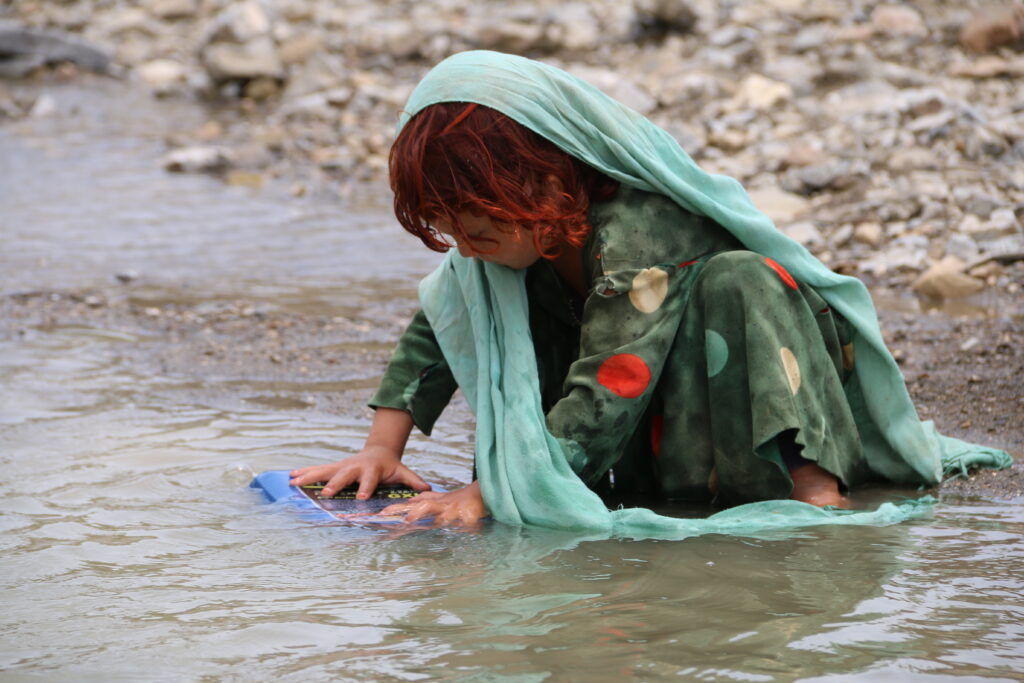For World Food Day, October 16, 2024, the Afghan Times and IUF Asia/Pacific released a report “Women and Food Insecurity in Afghanistan” highlighting the country’s worsening food crisis, deteriorating health conditions, and rising malnutrition, exacerbated by the Taliban’s systematic repression on women and girls’ rights.
Conflict and Instability
Afghanistan’s decades-long conflict has severely disrupted its food systems. Continuous violence, particularly in rural areas where farming is most prevalent, has limited access to agricultural land, destroyed infrastructure, and forced millions of people from their homes. Farmers face constant threats from land mines, insurgent activity, and airstrikes, which makes it unsafe to plant and harvest crops.
Conflict also disrupts supply chains. Transportation of goods across provinces has become dangerous and costly, making it difficult for markets to remain stocked with affordable food. In some regions, insurgent groups control key routes, further obstructing food deliveries. The political instability following the Taliban’s return to power in 2021 has intensified these issues.

Climate Change and Natural Disasters
Afghanistan is highly vulnerable to the impacts of climate change, which has contributed to recurring natural disasters such as droughts, floods, and harsh winters. Drought is the most pressing issue, affecting over 80% of the country and significantly reducing crop yields, especially wheat, a staple food. The 2021 drought alone destroyed over 40% of cropsin some regions, leading to widespread food shortages.
In addition to drought, flash floods and cold winters destroy crops, displace rural populations, and kill livestock. Without sufficient infrastructure and disaster preparedness programs, these climate events have long-lasting effects on food availability and farming livelihoods. As the climate crisis worsens, Afghanistan’s agricultural sector becomes less resilient to such shocks, making food insecurity more acute and unpredictable.

Poverty and Unemployment
Widespread poverty and unemployment are major contributors to food insecurity. With the economy in freefall, unemployment rates have surged, leaving millions of Afghans without a reliable source of income. In 2023, more than 90% of the population was living below the poverty line, compared to around 47% in 2020.
The combination of rising food prices and shrinking incomes has made it nearly impossible for families to buy enough food. This is especially true in urban areas where food is more expensive, but rural families dependent on agriculture are also struggling as they lack the resources to farm or access markets.
Many households have exhausted their coping mechanisms, such as borrowing money or relying on food aid, and are increasingly vulnerable to long-term hunger and malnutrition. Additionally, the lack of jobs for women—who have been increasingly restricted from employment and public life under the current regime—has further exacerbated household poverty, as women were often key contributors to family incomes. Unemployment among women is the direct result of the Taliban regime’s restriction on women. This constitutes politically forced unemployment.

Economic Decline and Sanctions
The rapid economic decline following the Taliban’s takeover has been a critical driver of food insecurity. The loss of international recognition and funding has left the Afghan economy in a state of collapse. International sanctions against the Taliban regime, including restrictions on accessing the global financial system, have led to a severe liquidity crisis. Foreign aid, which previously made up about 40% of Afghanistan’s GDP, has drastically reduced, crippling the economy.
Additionally, the Taliban’s ban on women’s education and work has exacerbated the economic challenges. Women, who previously contributed significantly to the workforce, particularly in education, healthcare, and other critical sectors, are now unable to work. This has resulted in a sharp decline in household incomes, particularly for families where women were the primary or significant breadwinners. The exclusion of women from economic participation has not only limited families’ financial means but has also stunted economic growth and productivity at a national level.
As a result, food prices have skyrocketed. Many Afghans cannot afford even basic staples like bread and rice. The lack of foreign currency has also made it difficult to import food, leading to scarcities in local markets. In many cases, families resort to skipping meals or selling off their assets, such as livestock, to buy food, further deepening their vulnerability. The compounded effects of sanctions, economic collapse, and the marginalization of women have made recovery prospects increasingly bleak.









